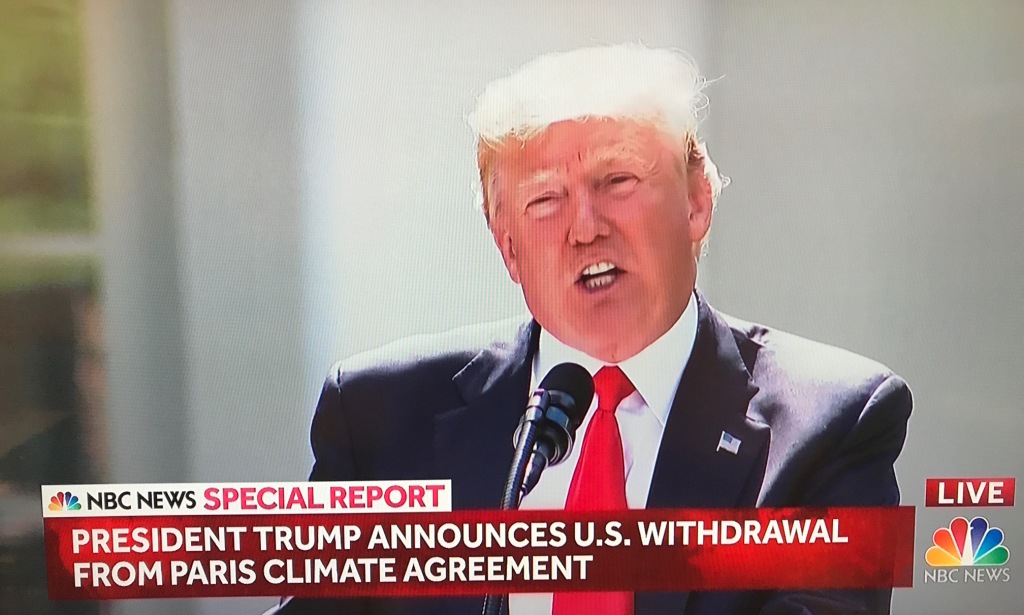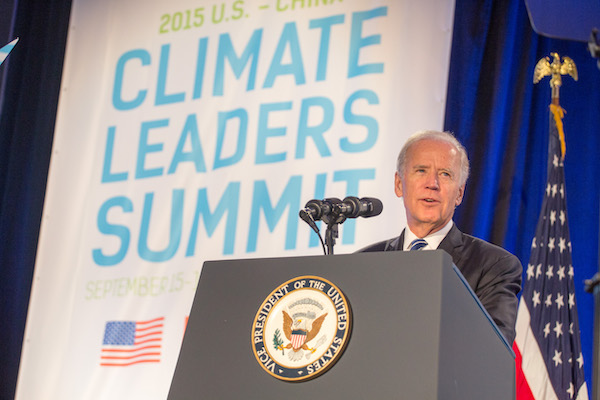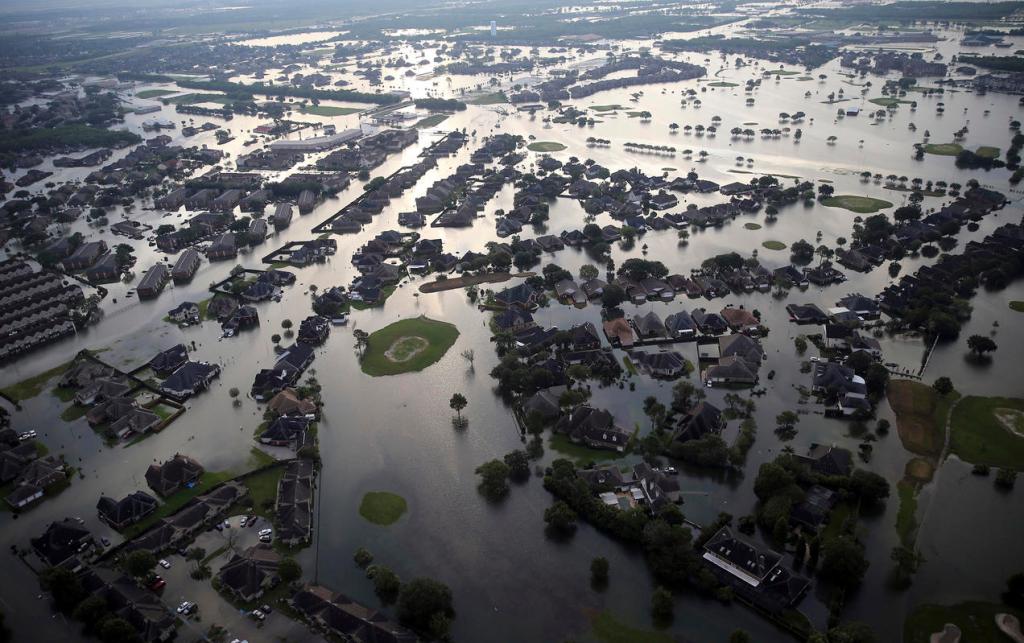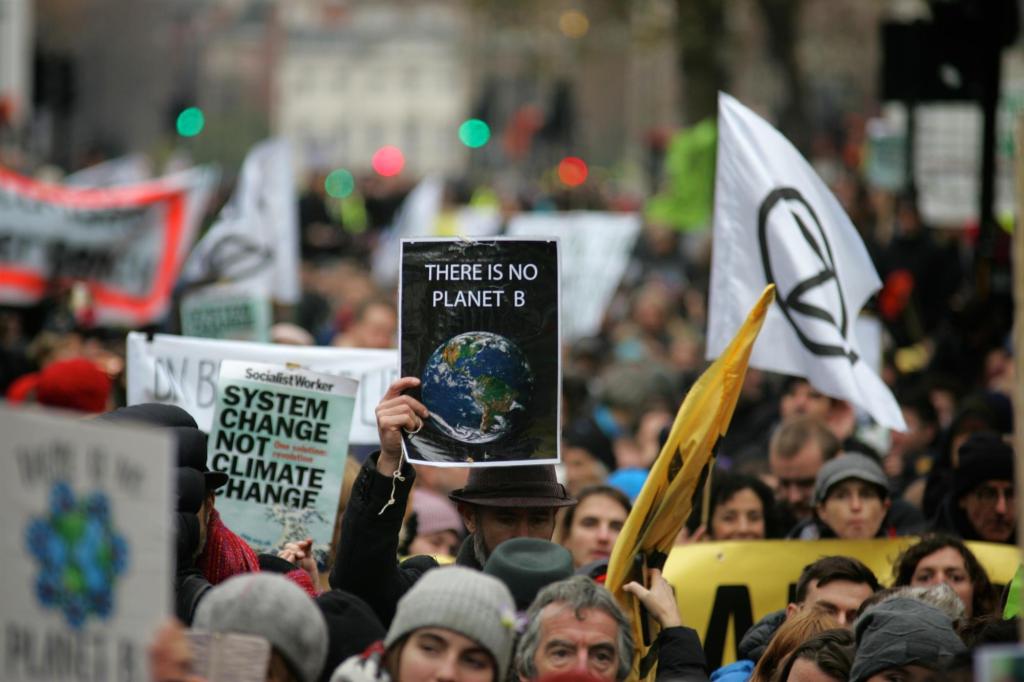The American people are currently waiting to find out who their next President will be, with the polls remaining very close and evenly divided. As the polls seem to edge closer towards Joe Biden becoming the next U.S President instead of Donald Trump, let’s take a look at what the result of the election will mean for the climate change campaign.

In 2017 with the onset of Trump becoming the U.S President, he set in motion the withdrawal of America from the Paris Climate Agreement. This Agreement came into force on 4th November 2016 and was an initiative run by the United Nations Framework Convention on Climate Change to help reduce global warming.
The Paris Climate Agreement…
- works to stop temperatures from rising more than 2 degrees Celsius by curbing the amount of greenhouse gas emissions allowed by each participating nation.
- is the first agreement to bring all nations together, bound by a common cause to combat climate change and adapt to its effects.
- involves countries creating their own plans for achieving reductions, so they independently determine their own course of action
- recognises global inequalities surrounding climate change and so there is a need for developed countries to support the efforts of countries that lack funds to establish climate change policies
- Tracks and reports GHG emissions based on scientific targets
- is the successor to the Kyoto Protocol

As of 2020, 190 out of 197 Parties to the Convention are Parties to the Paris Agreement. The countries that are currently not involved in the agreement are Turkey, Iran (despite being the major producer of oil with its energy sector accounting for around 77% of its total emissions), Iraq, Eritrea, Libya, South Sudan and Yemen. Angola was the latest country to ratify the climate deal on 12th August 2020.
In September, China (the world’s top emitter of greenhouse gases) announced the plan to make its economy carbon neutral by 2060 using a combination of renewable energy, nuclear power and carbon capture. Likewise, the EU’s Green Deal, announced in December 2019, sets out the plan for making the bloc carbon neutral by 2050. Compared with 1990 levels, the EU has already reduced its greenhouse-gas emissions by 24%.
Despite the various steps powerful countries are taking to help the planet as well as the continuous fight against climate change by environmental organisations, Trump in 2017 announced the decision to withdraw America from the Paris Agreement. He made this decision because he believes it is unfair that countries such as India and China are free to use fossil fuels while the U.S. had to curb their carbon. He also claimed it will hurt job growth, manufacturing and industries such as coal, natural gas, steel and cement. Trump instead wants to expand fossil fuels and undermine climate science.

The President did state that he would support measures to protect the economy and the country could potentially re-join the agreement if it is amended to be more fair for the U.S.
Katie Tubb, a senior policy analyst at the Heritage Foundation, a conservative US think tank stated “I’m not sure what Paris actually accomplished. In terms of getting to the end of the century, if the goal was to reduce global temperatures, it just can’t be done on the backs of the industrialised world.”
A New York times analysis based on research from Harvard Law School, Columbia Law School and other sources, counts more than 70 environmental rules and regulations officially reversed, revoked or rolled back under the Trump administration.
Trump states “China’s carbon emissions are nearly twice what the US has and… rising fast. Last year, America reduced its… emissions by more than any country in the [Paris climate] agreement.” As Christopher Giles and Wanyuan Song write for a BBC article… He is right about the total size of China’s emissions compared to the US but not when it comes to comparing China and the US in terms of emissions per person.
Trump has implemented some good environmental policies for example he signed the Great American Outdoors Act, an investment in national parks. However, his seriousness about climate change and the importance of protecting our environment is clearly not something at the top of his agenda.

The motion Trump set rolling in 2017 of America withdrawing from the Paris Climate Agreement was confirmed on Wednesday 4th November 2020, with America becoming the only country in the world refusing to participate in global climate efforts.
However, Joe Biden insists that if he becomes the next U.S President he will immediately re-join the agreement and spend big on green infrastructure in order to reverse the economic downturn from the pandemic. Biden has laid out a US $2 trillion clean energy and infrastructure plan, a commitment to rejoin the Paris agreement and a goal of net-zero emissions by 2050. If Biden does turn out to be the victor, this could pressure allies like Japan, Canada and Australia to step up as well as encourage a collaboration with the EU and China to agree on bigger targets.

If Donald Trump becomes the next President, the withdrawal from the Paris Climate Agreement will be cemented and this could encourage countries like China to resist calls for detailed tracking and reporting of how countries are implementing their policies and achieving their goals. Pete Betts, the former lead climate negotiator for the EU and the UK, said “global action will continue, albeit at a slower pace without the U.S.”
Here are the pros and cons of the Paris Climate Agreement:
Pros
- helping to stop global temperatures rising by 2 degrees Celsius will have a massive impact on the planet. For if the planet warms by 2 degrees there will be a decrease in water supplies and crop levels, as well as an increase in melting ice which would raise sea levels, flood coastal communities and risk thousands of lives and homes.
- it has global support
- it has support from fossil fuel companies e.g. ExxonMobil, Chevron and Shell
- health benefits e.g. efforts to reduce GHGs can improve air quality (air pollution kills around 7 million people a year)
Cons
- China and India signed the agreement without being forced to reduce their greenhouse emissions and so Trump has a valid point for the agreement not being completely fair.
- Under the guidelines, each nation can independently decide how to reduce emissions. Other aspects of the accord are non-binding, so there is really no way to ensure that they are enforced
- Fossil fuel industry and its friends will face consequences and eventually get phased out
All in all, a second Trump administration would be a blow to the climate movement. Extreme weather is already being witnessed across the globe which is shrinking world food supplies, forcing millions to flee their homes and depriving many of their basic human rights.


As we see climate change take its toll with more natural disasters and global temperatures rising, it is important that we put in place policies and work together in order to determine how much worse these things will get and to save our planet.

